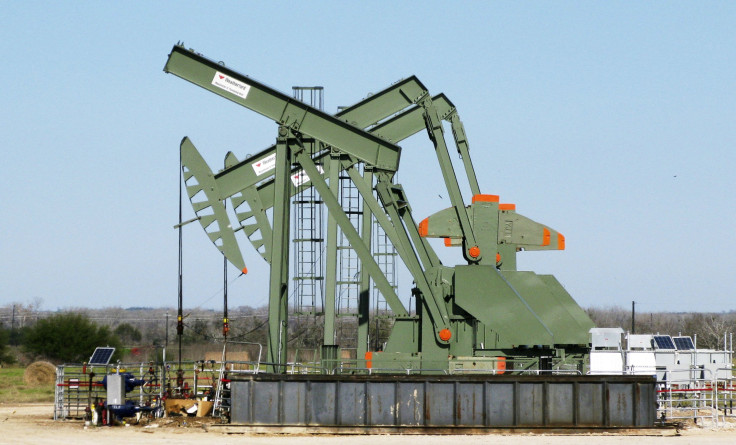Oil Prices, Production And 5 More Things To Know About OPEC

This article originally appeared on the Motley Fool.
OPEC has gotten its share of headlines over the years due to its influence on oil prices. From the oil embargo of the 1970s to the $100-plus per barrel crude prices of just a few years ago, the Organization of Petroleum Exporting Countries has held significant sway over the direction of oil prices. Here are seven things that everyone should know about this market-moving cartel.
1: OPEC was formed in 1960 for a single purpose.
At the Baghdad Conference in September 1960, Iran, Iraq, Kuwait, Saudi Arabia, and Venezuela formed The Organization of Petroleum Exporting Countries, or OPEC. Its stated purpose was to:
Co-ordinate and unify petroleum policies among Member Countries, in order to secure fair and stable prices for petroleum producers; an efficient, economic and regular supply of petroleum to consuming nations; and a fair return on capital to those investing in the industry.
In this goal, the member nations aimed to counter the influence of the "Seven Sisters" -- seven large western oil companies -- on oil prices.
• Motley Fool Issues Rare Triple-Buy Alert
2: OPEC currently has 13 members
Several other nations subsequently joined the five founding members of OPEC: Qatar in 1961, Indonesia in 1962, Libya in 1962, the United Arab Emirates in 1967, Algeria in 1969, Nigeria in 1971, Ecuador in 1973, Gabon in 1975, and Angola in 2007. Both Ecuador and Gabon left OPEC for a while before rejoining in 2007 and 2016, respectively. Meanwhile, Indonesia left in 2009, then rejoined early last year only to leave again at the end of the year. As a result, there are currently 13 members of OPEC.
3: Saudi Arabia is by far OPEC's top oil producer.
In 2016, OPEC members produced nearly 32.5 million barrels of oil per day (bpd) -- about 36% of global crude production. Leading the way was Saudi Arabia, which produced an average of 10.4 million bpd, or 32% of the total. Rounding out the top five were Iraq (4.4 million bpd), Iran (3.5 million bpd), UAE (3 million bpd), and Kuwait (2.9 million bpd). One reason Saudi Arabia can pump so much more oil each day than its fellow members is its rock-bottom production costs.
4: While OPEC does not control oil prices, it does influence them
OPEC can't set oil prices because crude trades on the global market. However, because it does control more than a third of global crude output, it can nudge them in a desired direction. That's what it tried to do last November by delivering a six-month production cut that it coordinated with several nonmember nations. By reducing supply, that agreement pushed oil prices from the mid-$40s into the mid-$50s for a while. However, the rebound in oil prices incentivized other competitors, namely U.S. shale drillers, to increase their output. For example, leading shale driller EOG Resources (NYSE:EOG) boosted its drilling budget 44%, a move it expects will fuel 18% growth in its oil production this year. EOG is one of several U.S. oil producers ramping up production in the wake of OPEC's intervention, which has put some downward pressure back on crude prices.
• This Stock Could Be Like Buying Amazon in 1997
5: OPEC requires a unanimous vote to increase or cut oil output
Not only does OPEC battle against non-members over the direction of oil prices, it often battles within itself. That's because it takes a unanimous vote of all members for OPEC to enact or extend an output cut, or to increase production caps. The members often have contradictory goals, which can make it hard to come to such an agreement. It takes a lot of lobbying and meetings to get everyone on the same page -- when that happens.
6: Venezuela is the leader for oil reserves
OPEC controls an estimated 1.2 trillion barrels of proven oil reserves -- defined as oil that it can produce with reasonable certainty and with current technology and prices. That's a whopping 81% of total estimated global oil reserves. What's surprising about OPEC's reserves is that the leading holder isn't Saudi Arabia, nor any of the other top-five producers. Instead, it's Venezuela, which holds an estimated 300.9 billion barrels of crude in the ground, or 24.8% of OPEC's total, edging out Saudi Arabia's 266.5 billion barrel reserve. For comparison sake, the U.S. currently has just 35.2 billion barrels of proven oil reserves according to government data, though when adding in total recoverable resources, the U.S. leads the globe.
• 7 of 8 People Are Clueless About This Trillion-Dollar Market
7: 34% of U.S. oil imports came from OPEC in 2016
In 2016, the United States imported 3.45 million bpd of oil from OPEC countries according to the U.S. Energy Information Administration, which was 34% of total U.S. oil imports. Saudi Arabia was the leading OPEC source, supplying 1.1 million bpd. That said, the U.S. imported more oil from Canada (3.8 million bpd) than from OPEC. Further, our oil imports from OPEC have fallen sharply since peaking at nearly 6.5 million barrels per day just before the financial crisis, driven down by rising U.S. shale output. The country's net oil imports were just a quarter of total consumption last year, one of the lowest levels since 1970.
Matt DiLallo has no position in any stocks mentioned. The Motley Fool owns shares of EOG Resources. The Motley Fool has a disclosure policy.





















